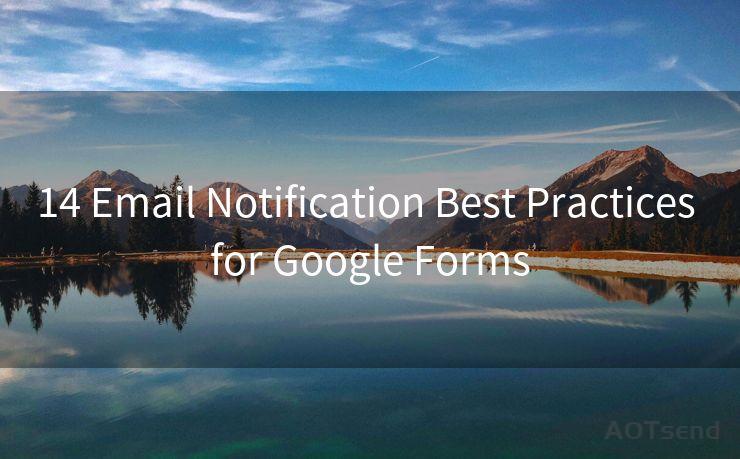14 Email Notification Best Practices for Google Forms




Google Forms is a versatile tool for collecting data, but its real power lies in how you manage and respond to that data. One crucial aspect is setting up effective email notifications. Here are 14 best practices for email notifications in Google Forms to help you streamline your workflow and improve communication.
1. Immediate Notifications
Set up your Google Form to send immediate email notifications upon form submission. This ensures a prompt response to inquiries or requests, enhancing customer satisfaction.
2. Customized Email Templates
Create customized email templates for different scenarios. Whether it's a thank you message, a confirmation of receipt, or a request for additional information, tailored templates enhance the user experience.
3. Clear and Concise Messaging
Keep email notifications short, sweet, and to the point. Avoid jargon or complex language, and get straight to the essential information.
4. Personalization
Use form data to personalize email notifications. Addressing the respondent by name and referencing their specific inquiry shows that you value their input.
5. Call to Action
Include a clear call to action in your email notifications. Whether it's to provide additional information, confirm details, or take advantage of a promotion, give the respondent a clear next step.
6. Responsive Design
Ensure your email notifications are mobile-friendly. Many users check their emails on the go, so it's essential that your messages display correctly on all devices.
7. Follow-Up Sequences
Create an automated follow-up sequence for form submissions. This could include a series of emails with additional information, surveys, or offers based on the user's initial inquiry.
8. Opt-In Options
Provide an option for respondents to opt-in to future communications. This not only respects their privacy but also helps you build a targeted email list for marketing purposes.
9. Test Emails
Regularly test your email notifications to ensure they're working correctly. Send yourself a test email to check formatting, links, and call-to-action buttons.
10. Unsubscribe Option
Always include an unsubscribe option in your email notifications. This is not only a legal requirement in many countries but also helps maintain a healthy email list.
11. Tracking and Analytics
Utilize tracking and analytics tools to monitor the performance of your email notifications. This data can help you refine your messages and improve engagement.
12. A/B Testing
Conduct A/B testing on different versions of your email notifications to see which ones resonate best with your audience.
13. Security and Privacy
Ensure that your email notifications comply with all relevant security and privacy regulations, especially when handling sensitive user data.
🔔🔔🔔
【AOTsend Email API】:AOTsend is a Managed Email Service for sending transactional emails. Support Email Types: reminders, authentication, confirmations, notifications, verification codes, invoices, password resets, account activations, billing statements, two-factor authentication (2FA), and one-time passwords (OTP) emails, etc. $0.28 per 1000 Emails. 99% Delivery, 98% Inbox Rate.
You might be interested in:
Why did we start the AOTsend project, Brand Story?
What is a Managed Email API, How it Works?
Best 25+ Email Marketing Platforms (Authority,Keywords&Traffic Comparison)
Best 24+ Email Marketing Service (Price, Pros&Cons Comparison)
Email APIs vs SMTP: How they Works, Any Difference?
14. Feedback Loop
Encourage respondents to provide feedback on your email notifications. This helps you continuously improve your communication and better serve your audience.
By following these 14 best practices for email notifications in Google Forms, you can enhance your workflow, improve customer satisfaction, and build stronger relationships with your respondents. Remember, effective communication is key to any successful business or organization.





Scan the QR code to access on your mobile device.
Copyright notice: This article is published by AotSend. Reproduction requires attribution.
Article Link:https://www.mailwot.com/p4422.html



